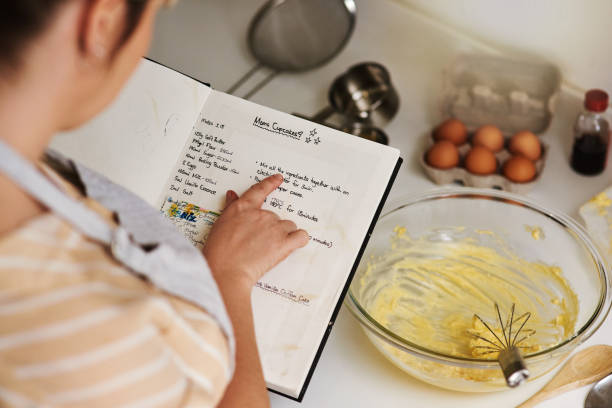
A recipe book can be deceptive. It seems so easy: Combine all your recipes, add a beautiful photo on the cover, and voilà! Move over, Nigella Lawson! Recipe books are indeed more straightforward to create than other genres. However, they still require structure, consistency, and pace.
Once you have created a framework for your recipes, pay attention to the details of each one. The reader has subconscious expectations about how each genre of material is put together, how it flows, and which direction to take.
It can be hard to pinpoint the exact ingredient needed, but if you don’t have it, you will quickly know if there is a problem. The same is true for recipes. The recipes have an unspoken sequence that lets the reader enjoy the creative process without searching for additional ingredients in the middle of the flambe.
These eight tricks will help you see your recipe through your reader’s eyes and fix any holes.
How will you divide your recipe groups?
Breakfast, lunch, Dinner, Snack.
You can choose from various ingredients, including meat, fish, or salad. Or, you could try something more unusual.
Seasonal dishes, like winter warmers and summer salads.
Vegetarian, gluten-free, and dairy-free diets are examples of dietary requirements.
Cook Your Recipes
This seems obvious to me. You know how to prepare the recipes because you wrote them. You can still play along with me and pretend to be the reader. This idea may cause some people to groan and roll their eyes, but it is the best way of ensuring that the recipes are correct. This step will help you not to cook from memory. You know your recipe so well that it is easy to assume what the reader already knows. You may not notice minor omissions like forgetting to add salt or pepper or turning your food halfway through cooking.
Follow the recipe strictly. Check each recipe and follow the steps systematically. Only measure the ingredients listed in the recipe. You’ll quickly realize if you must include an element or write tspn rather than tbsp. Check that the recipe explains every step. It is essential to follow the instructions in the written form, not what you ‘know’ as the author. It is always possible to ask others to cook your recipe – this can be even more effective!
Check that you haven’t missed an ingredient
As you read through each recipe, start by reading the method. As you read the process, mark off each ingredient. You can then be sure that you have all the ingredients.
Sort the ingredients in order
List the ingredients in the order that you plan to use them. The reader wants the frozen mangoes to refrain from defrosting.
Select a language
Are you Australian, British, or American? Each country has its system of measuring. In Australia, a cup is 250ml. In the USA, it’s 240ml—and in Britain, 284ml. The teaspoons are also different! There are also the names. You can use snow peas or mange tout. Stick to the language you have chosen. Make sure to change your computer’s settings to spellchecks in the correct language, even though the spellings may differ.
Standardize your measurements
Stick to a standard way of writing your measurements. You can use either 1 tbsp or 1 tbsp. I prefer the second option because it is easier to read. But whichever one you choose, you must maintain consistency. Make a list of rules that you will follow. This list will be valuable as part of a style guide you can give to your Editor and proofreader, who will have to review your work.
Choose Great Photos
It would be best to be careful when choosing the images you use to illustrate your book. It is challenging to show ingredients with a company logo or branding. Follow the example of cooking shows. The viewers should only see the packet if they need more than 1 cup of coconut flour. The flour should be pre-measured into a small bowl and dumped into the mixture. It is not only easier to avoid legal issues, but it also lets your reader know how much you have put on. For example, get a matching set of bowls with a solid color for a cup of coconut and a teaspoon of cinnamon. Measure your ingredients in the bowls before taking your pictures.
Add Extras
Decide on what you would like to add to each recipe. Do you want a guide to say if each recipe is gluten/vegetarian/egg free? What about ratings for difficulty or preparation time? Perhaps some serving tips? Create a system for each recipe that suits your cooking style.
